-
 Bitcoin
Bitcoin $115000
0.12% -
 Ethereum
Ethereum $3701
4.50% -
 XRP
XRP $3.081
2.99% -
 Tether USDt
Tether USDt $0.0000
-0.01% -
 BNB
BNB $767.9
1.45% -
 Solana
Solana $169.5
3.13% -
 USDC
USDC $0.9999
0.01% -
 Dogecoin
Dogecoin $0.2106
4.30% -
 TRON
TRON $0.3334
1.62% -
 Cardano
Cardano $0.7564
2.54% -
 Stellar
Stellar $0.4165
0.76% -
 Hyperliquid
Hyperliquid $38.75
0.25% -
 Sui
Sui $3.593
3.00% -
 Chainlink
Chainlink $17.08
3.59% -
 Bitcoin Cash
Bitcoin Cash $573.6
4.35% -
 Hedera
Hedera $0.2508
-0.84% -
 Avalanche
Avalanche $23.07
6.46% -
 Ethena USDe
Ethena USDe $1.001
-0.02% -
 Litecoin
Litecoin $120.8
8.17% -
 UNUS SED LEO
UNUS SED LEO $8.943
-0.32% -
 Toncoin
Toncoin $3.400
-5.60% -
 Shiba Inu
Shiba Inu $0.00001255
1.54% -
 Uniswap
Uniswap $9.908
6.32% -
 Polkadot
Polkadot $3.718
2.10% -
 Monero
Monero $303.0
-0.74% -
 Dai
Dai $0.9999
-0.02% -
 Bitget Token
Bitget Token $4.392
0.91% -
 Cronos
Cronos $0.1403
6.31% -
 Pepe
Pepe $0.00001076
1.13% -
 Aave
Aave $267.2
1.80%
How to understand the role of Layer 2 solutions in Ethereum's expansion?
Layer 2 solutions enhance Ethereum's scalability, speed, and cost-effectiveness by processing transactions off-chain, addressing the network's high fees and slow times.
Apr 17, 2025 at 03:29 am
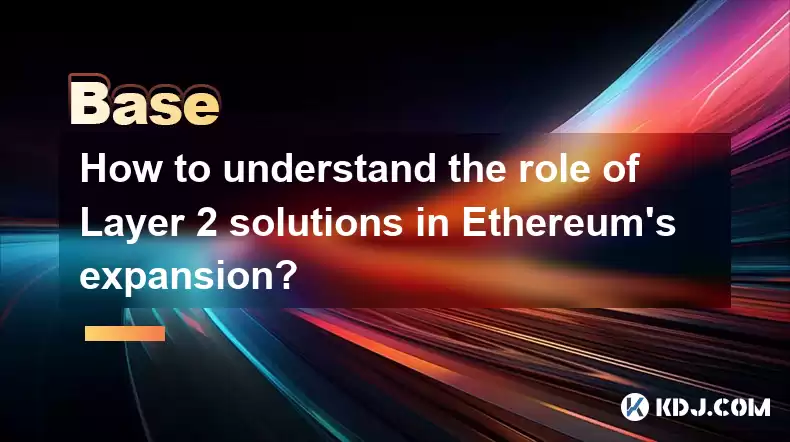
Understanding the role of Layer 2 solutions in Ethereum's expansion involves recognizing the limitations of the current Ethereum network and how these solutions address them. Layer 2 solutions are protocols built on top of the Ethereum blockchain to improve its scalability, speed, and cost-effectiveness. They are crucial for handling the increasing demand for Ethereum transactions without compromising the network's security and decentralization.
The Need for Layer 2 Solutions
The Ethereum network has faced significant challenges as its popularity has grown. High transaction fees and slow transaction times have been major issues, particularly during periods of high network congestion. These problems stem from the blockchain's limited capacity to process transactions quickly. Layer 2 solutions aim to alleviate these issues by processing transactions off the main Ethereum chain, thereby reducing the load on the network.
Types of Layer 2 Solutions
There are several types of Layer 2 solutions, each with its own approach to improving Ethereum's scalability. State channels allow participants to transact multiple times off-chain, with only the final state being recorded on the Ethereum blockchain. Plasma chains are separate blockchains that are anchored to the main Ethereum chain, allowing for more transactions to be processed. Optimistic rollups and zero-knowledge rollups are other types of Layer 2 solutions that batch multiple transactions into a single transaction on the Ethereum mainnet.
How State Channels Work
State channels are one of the simplest and most widely used Layer 2 solutions. They enable participants to conduct multiple transactions off-chain, which are then settled on the Ethereum blockchain. To use a state channel:
- Open the channel: Participants lock up funds in a smart contract on the Ethereum blockchain.
- Conduct transactions: Off-chain transactions are signed by participants and can be updated multiple times without being recorded on the blockchain.
- Close the channel: When participants decide to end the channel, the final state is submitted to the Ethereum blockchain, and the locked funds are distributed according to the final state.
The Role of Plasma Chains
Plasma chains are another type of Layer 2 solution that enhances Ethereum's scalability. They are essentially sidechains that operate independently but are periodically anchored to the main Ethereum chain. This allows for faster transaction processing and lower fees. The process of using a plasma chain involves:
- Creating a plasma chain: A new blockchain is created and linked to the Ethereum mainnet through a smart contract.
- Transacting on the plasma chain: Users can conduct transactions on the plasma chain, which are faster and cheaper than on the main Ethereum chain.
- Withdrawing to the mainnet: When users want to move their assets back to the Ethereum mainnet, they submit a proof of their balance on the plasma chain to the mainnet smart contract, which then releases the corresponding amount of assets.
Optimistic Rollups and Zero-Knowledge Rollups
Optimistic rollups and zero-knowledge rollups are more recent innovations in the Layer 2 space. Optimistic rollups assume that transactions are valid by default and only execute them on the Ethereum mainnet if a fraud proof is submitted. This approach reduces the load on the mainnet while maintaining security. Zero-knowledge rollups, on the other hand, use cryptographic proofs to validate transactions off-chain before submitting them to the mainnet. Both types of rollups batch multiple transactions into a single transaction on the Ethereum mainnet, significantly increasing throughput.
Benefits of Layer 2 Solutions
Layer 2 solutions offer several benefits to the Ethereum ecosystem. Increased scalability is the most obvious advantage, as these solutions can handle a much higher volume of transactions than the main Ethereum chain. Reduced transaction fees are another significant benefit, as users can transact more cheaply on Layer 2. Additionally, faster transaction times are achieved, as transactions are processed off-chain and only the final state or batch is recorded on the mainnet. These improvements make Ethereum more usable for everyday transactions and more attractive to developers and users.
Challenges and Considerations
While Layer 2 solutions offer many benefits, they also come with challenges and considerations. Complexity is a major issue, as these solutions require users to understand and interact with additional protocols. Security risks are another concern, as the security of Layer 2 solutions depends on the underlying Ethereum blockchain and the specific implementation of the Layer 2 protocol. Interoperability between different Layer 2 solutions is also a challenge, as users may need to move their assets between different protocols. Despite these challenges, the potential benefits of Layer 2 solutions make them a crucial part of Ethereum's expansion strategy.
Frequently Asked Questions
Q: How do Layer 2 solutions affect the security of the Ethereum network?
A: Layer 2 solutions do not compromise the security of the Ethereum network itself. They operate on top of the Ethereum blockchain, which provides the ultimate security layer. However, the security of specific Layer 2 solutions can vary based on their design and implementation. It's important for users to understand the security model of the Layer 2 solution they are using.
Q: Can I use multiple Layer 2 solutions simultaneously?
A: Yes, it is possible to use multiple Layer 2 solutions, but it can be complex and may require moving assets between different protocols. Interoperability between Layer 2 solutions is an area of ongoing development, and users should be aware of the potential challenges and fees associated with moving assets between different Layer 2 solutions.
Q: How do Layer 2 solutions impact the decentralization of the Ethereum network?
A: Layer 2 solutions can potentially impact the decentralization of the Ethereum network, depending on their design. Some Layer 2 solutions may rely on centralized operators or require users to trust certain parties, which could reduce the overall decentralization of the ecosystem. However, many Layer 2 solutions are designed to maintain the decentralized nature of Ethereum, and ongoing research aims to improve the decentralization of these solutions.
Q: Are Layer 2 solutions only for Ethereum, or can they be used with other blockchains?
A: While Layer 2 solutions are most commonly associated with Ethereum due to its scalability challenges, the concept of Layer 2 can be applied to other blockchains as well. Some other blockchains have developed their own Layer 2 solutions, but Ethereum's ecosystem has seen the most development and adoption of these technologies.
Disclaimer:info@kdj.com
The information provided is not trading advice. kdj.com does not assume any responsibility for any investments made based on the information provided in this article. Cryptocurrencies are highly volatile and it is highly recommended that you invest with caution after thorough research!
If you believe that the content used on this website infringes your copyright, please contact us immediately (info@kdj.com) and we will delete it promptly.
- Bitcoin, Fed Rate Cut, and Crypto Stocks: A New Yorker's Take
- 2025-08-05 14:50:12
- Police, Cryptocurrency, Bitcoin Windfall: Unexpected Gains and Cautionary Tales
- 2025-08-05 15:30:12
- MAGACOIN: The Next Shiba Inu ROI? A Crypto Presale Deep Dive
- 2025-08-05 15:30:12
- Bitcoin, Kiyosaki, and the August Curse: Will History Repeat?
- 2025-08-05 14:50:12
- Crypto Airdrops: Your August 2025 Guide to Free Tokens & Opportunities
- 2025-08-05 13:45:13
- Luxury Dining Reimagined: St. Regis Singapore & Marriott's Culinary Celebration
- 2025-08-05 13:45:13
Related knowledge
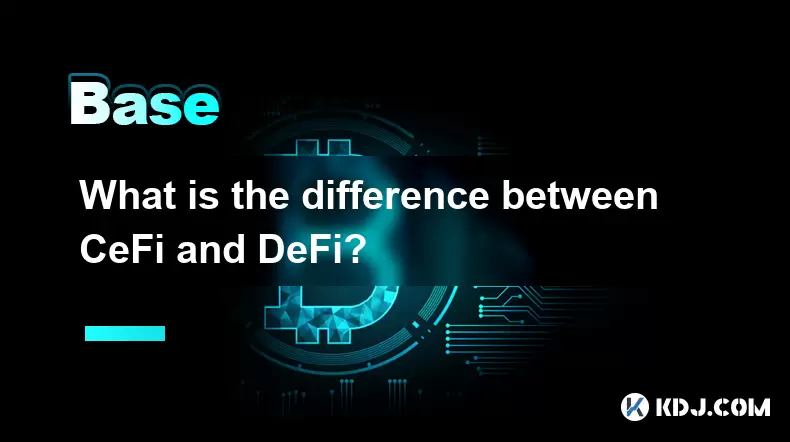
What is the difference between CeFi and DeFi?
Jul 22,2025 at 12:28am
Understanding CeFi and DeFiIn the world of cryptocurrency, CeFi (Centralized Finance) and DeFi (Decentralized Finance) represent two distinct financia...
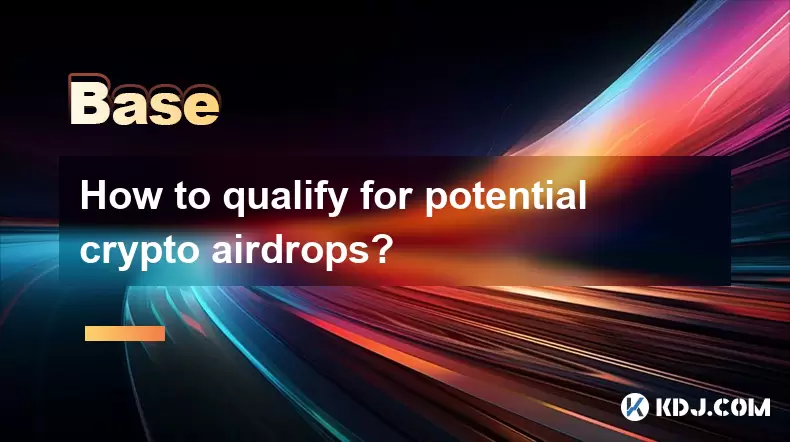
How to qualify for potential crypto airdrops?
Jul 23,2025 at 06:49am
Understanding What Crypto Airdrops AreCrypto airdrops refer to the distribution of free tokens or coins to a large number of wallet addresses, often u...
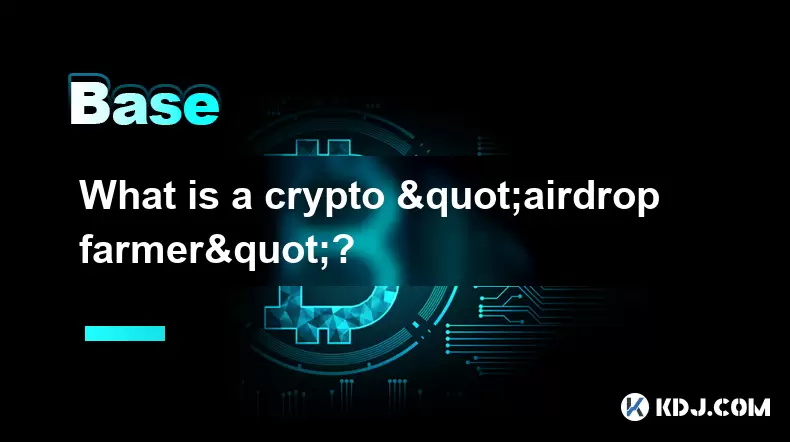
What is a crypto "airdrop farmer"?
Jul 24,2025 at 10:22pm
Understanding the Role of a Crypto 'Airdrop Farmer'A crypto 'airdrop farmer' refers to an individual who actively participates in cryptocurrency airdr...
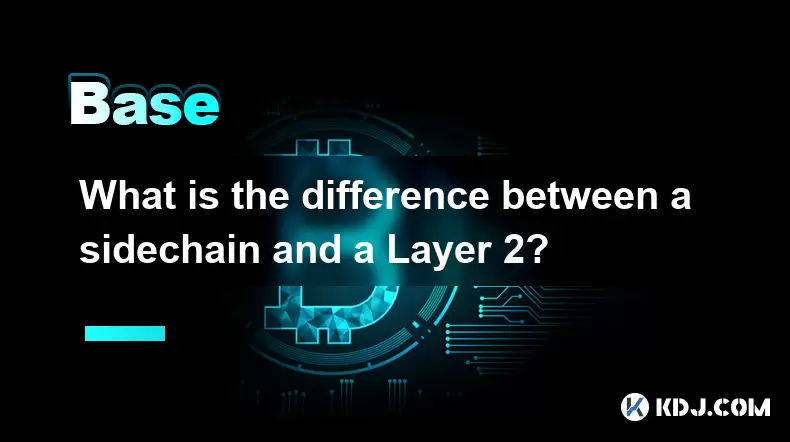
What is the difference between a sidechain and a Layer 2?
Jul 20,2025 at 11:35pm
Understanding the Concept of SidechainsA sidechain is a separate blockchain that runs parallel to the main blockchain, typically the mainnet of a cryp...
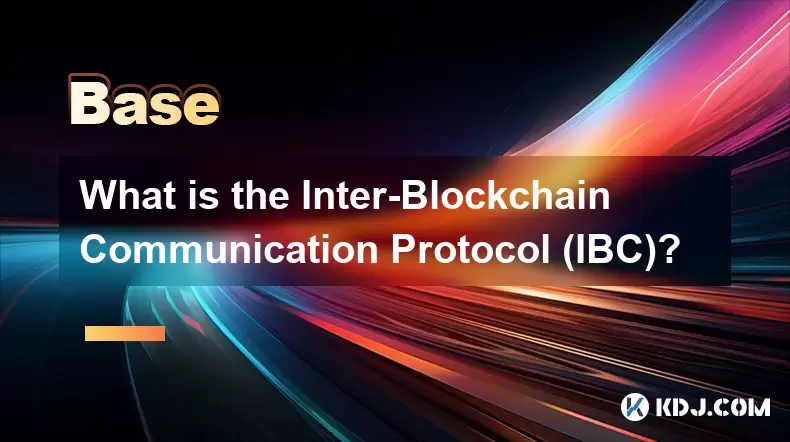
What is the Inter-Blockchain Communication Protocol (IBC)?
Jul 19,2025 at 10:43am
Understanding the Inter-Blockchain Communication Protocol (IBC)The Inter-Blockchain Communication Protocol (IBC) is a cross-chain communication protoc...
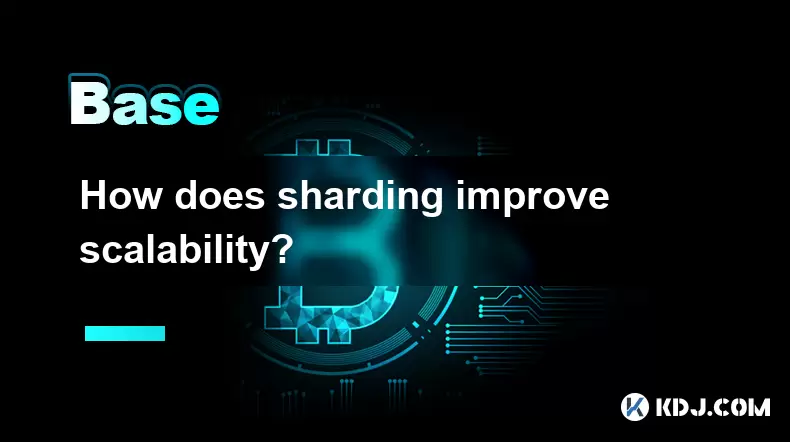
How does sharding improve scalability?
Jul 20,2025 at 01:21am
Understanding Sharding in BlockchainSharding is a database partitioning technique that is increasingly being adopted in blockchain technology to enhan...

What is the difference between CeFi and DeFi?
Jul 22,2025 at 12:28am
Understanding CeFi and DeFiIn the world of cryptocurrency, CeFi (Centralized Finance) and DeFi (Decentralized Finance) represent two distinct financia...

How to qualify for potential crypto airdrops?
Jul 23,2025 at 06:49am
Understanding What Crypto Airdrops AreCrypto airdrops refer to the distribution of free tokens or coins to a large number of wallet addresses, often u...

What is a crypto "airdrop farmer"?
Jul 24,2025 at 10:22pm
Understanding the Role of a Crypto 'Airdrop Farmer'A crypto 'airdrop farmer' refers to an individual who actively participates in cryptocurrency airdr...

What is the difference between a sidechain and a Layer 2?
Jul 20,2025 at 11:35pm
Understanding the Concept of SidechainsA sidechain is a separate blockchain that runs parallel to the main blockchain, typically the mainnet of a cryp...

What is the Inter-Blockchain Communication Protocol (IBC)?
Jul 19,2025 at 10:43am
Understanding the Inter-Blockchain Communication Protocol (IBC)The Inter-Blockchain Communication Protocol (IBC) is a cross-chain communication protoc...

How does sharding improve scalability?
Jul 20,2025 at 01:21am
Understanding Sharding in BlockchainSharding is a database partitioning technique that is increasingly being adopted in blockchain technology to enhan...
See all articles

























































































